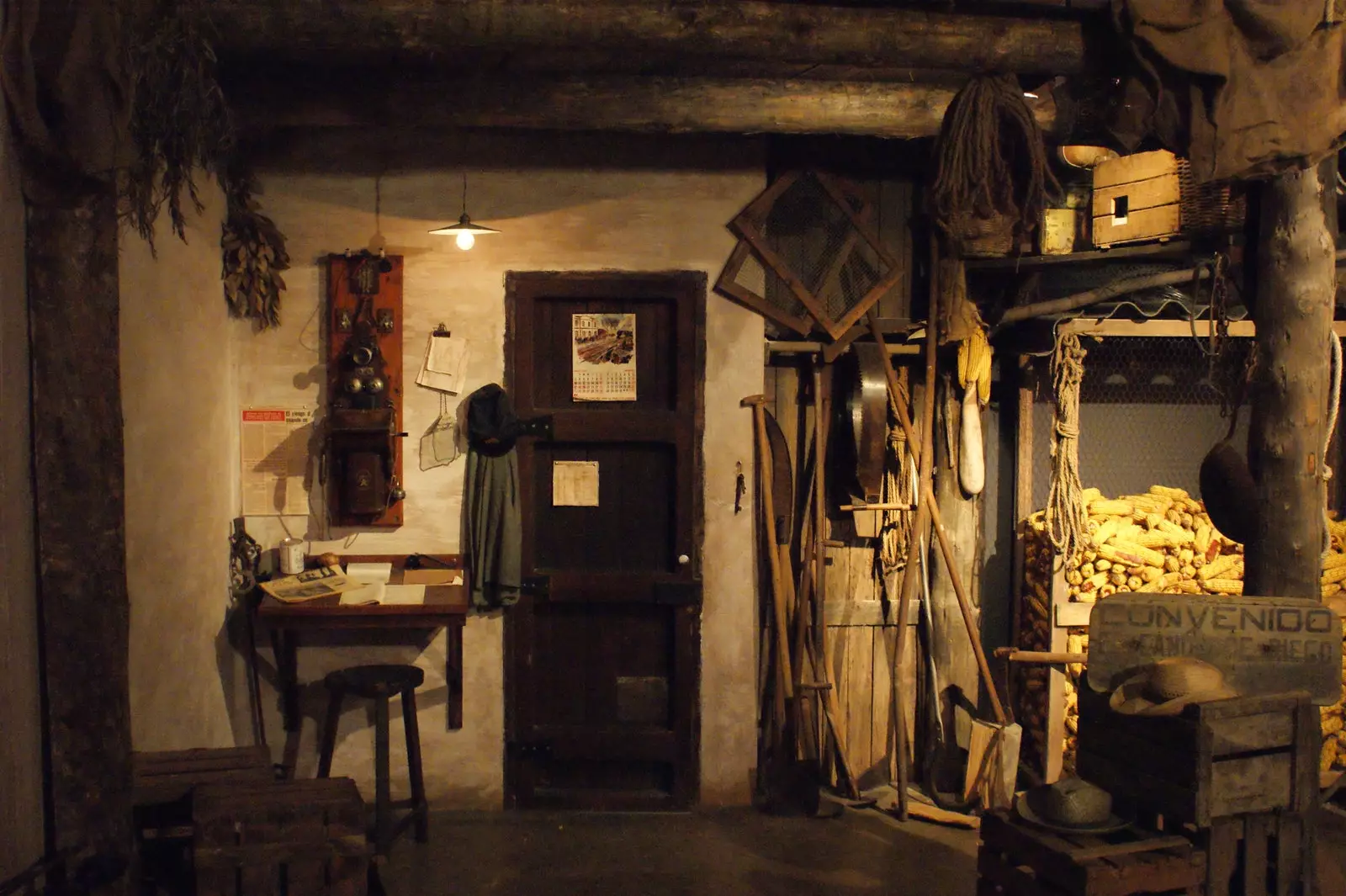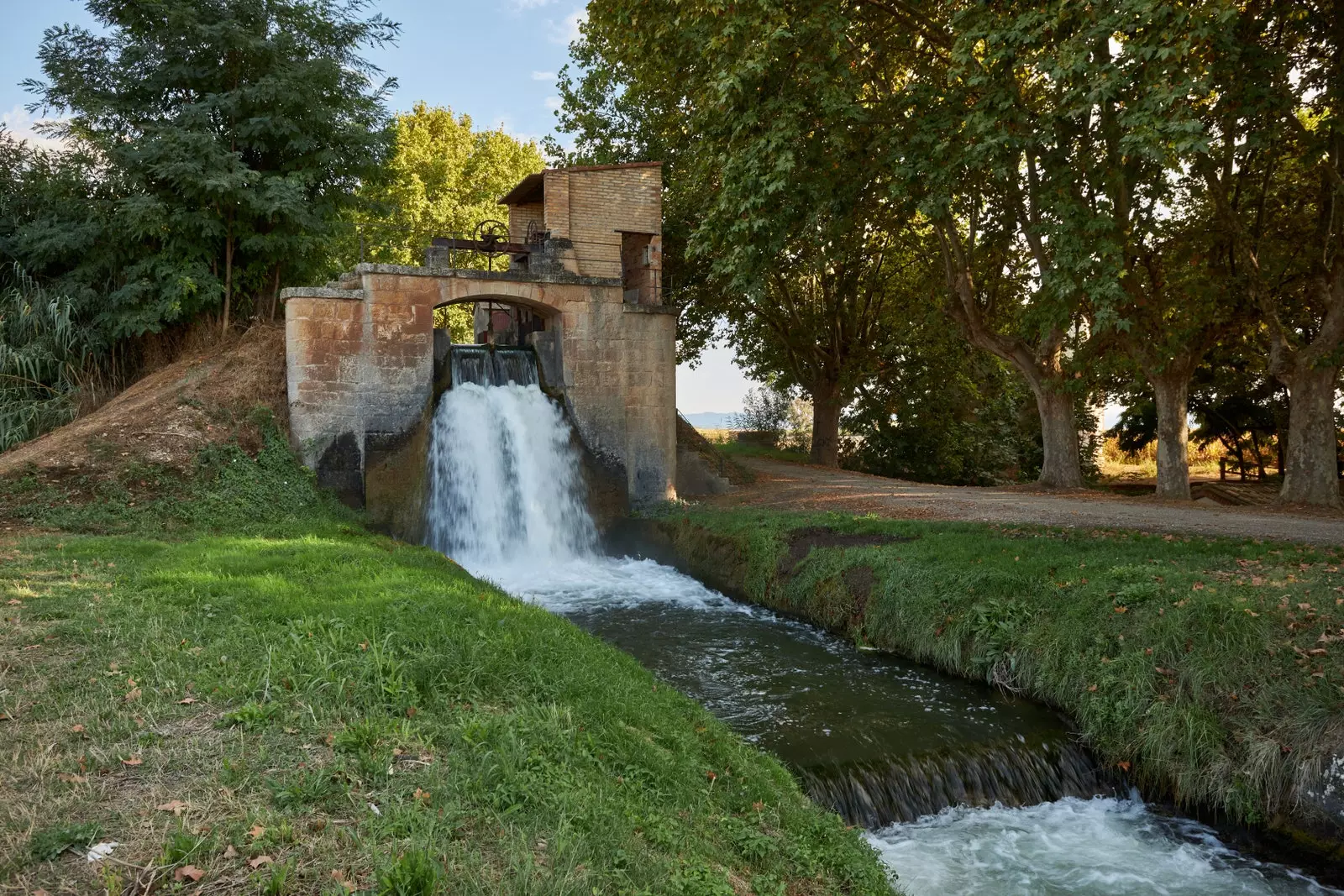They called it the devil's hole (The Clot of the Devil in Catalan). It was a territory in which there was no water at all. The earth cracked and no seed germinated from those dry furrows. The few inhabitants who had not abandoned their villages only took roots from their land. And in summer, there was no shade to shelter from the sun.
In 1346 there was talk, for the first time, of the possibility of somehow getting water to that vast area that was so dry, what had been the old county of Urgell. But it was not until the middle of the 19th century (1852), 500 years later, that the first water channeling projects were drawn up.
The Girona family, bourgeois from the neighboring town of Tàrrega, paid for what would be the largest hydrographic infrastructure in Catalonia which, since then, has irrigated more than 70,000 hectares, one of the largest artificially hydrated surfaces in Europe.
The canal and its branches were built between 1853 and 1861. Just now 160 years ago, water began to arrive, and with it much more life, to five counties of Lleida.

Canaler House, Canals d'Urgell.
The whole history of these canals, what it cost to build all the infrastructure, who made it possible and how they organized the community of irrigators still in force today, they explain it to us in the Cultural Space of the Canals d'Urgell, located in the so-called Casa Canal, in the town of Mollerussa, that until 2003 was inhabited by workers and those responsible for the work and their families.
Entering its permanent exhibition is everything a trip to the past which, through different rooms recreated at each historical moment, shows us the transformation of the territory from rainfed to irrigated, until today.
His visit is a magnificent starting point to situate ourselves in what later awaits us in the open air, kilometers and kilometers of canal next to which beautiful trails have been created for walking or pedal a bike.
And all around us farmland and fruit trees that in the flowering season they show an incredible show, nothing to envy to the wonderful cherry blossoms of Japan.
And in Lleida, moreover, at any time of the year the counties of Urgell, Pla d'Urgell, Garrigues, Segrià and Noguera, protagonists in the history of irrigation canals, sunsets and its sunsets converge in a harmony of yellows, ocher and reddish worthy of sitting down to contemplate them, photograph them or paint them on a canvas.
325 kilometers of roads along the Canal d'Urgell are destined to link up and become one of the greenways longest in Europe. It is an ambitious environmental project that can already be enjoyed in a fragmented way, with walks along those paths between crop fields.
In them you can breathe the calm that accompanies so much in those moments of disconnection. As we walk next to the trees that outline the path next to the canal, we see the waterfalls, like the nine that are concentrated in the town of Juneda.
Walking along the canal, from time to time we will also see some of the old houses where the guardians used to live. There were about 60, of which 3 are still inhabited today, a few others are still in good condition and its rehabilitation is planned, within the framework of an ambitious project that wants to promote sustainable tourism, where the landscape speaks to us about the present and the past, in complete harmony.

Duran Golmés waterfall, Canals d'Urgell.
A POND, OASIS FOR BIRDS
In addition to irrigating the land of some 20,000 farmers, produce the hydraulic energy that brings light to neighboring municipalities and supply farms and industries in the territory, the water that arrived channeled has made it possible to create the Ivars and Vila-sana pond, the largest in Catalonia.
Through six kilometers of route, you can choose various itineraries in the surroundings of a beauty that is an oasis for birds on their migratory path. Others nest in it all year. In the different signposted routes, we will find information panels with the drawing and details of the bird species that we can observe at each time of the year.
The pond and its surroundings can be discovered on your own or participating in organized activities for families and groups, or with guided tours. The Tourist Board of the Diputació de Lleida suggests some proposals. and also from pedals of the world accompany in it.
And to enjoy this getaway to the Catalan hinterland in keeping with the territory, we can sleep in rural accommodation in the area, like the ones shown in the Federation of rural houses in Lleida.
We will wake up very close to our paths that accompany water, the source of life. In fact, one of the hypotheses about the origin of life places it at the bottom of the sea. If that was where it all started, wow, I know! But there is a place in Catalonia where the water did give life, and a lot, to an entire population.
